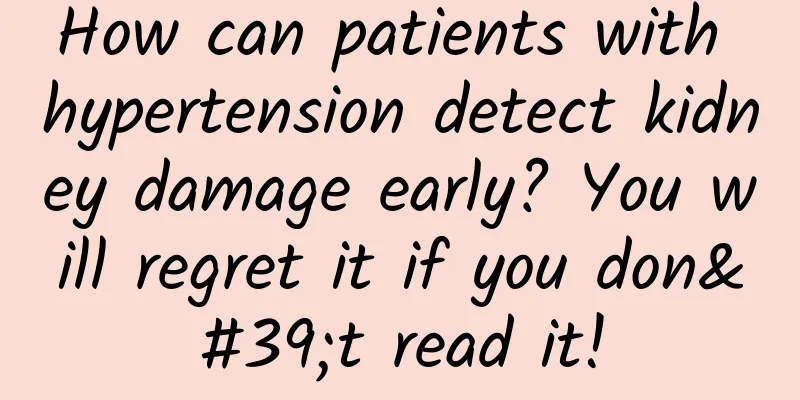How to catch Helicobacter pylori, the “culprit behind” gastric cancer?

|
Author: Cheng Hong, Chief Physician, Peking University First Hospital Reviewer: Liu Jingshan, Chief Physician, Peking University Shougang Hospital As people's health awareness increases, getting sick less or not getting sick has become a goal that everyone pursues. However, the infection rate of Helicobacter pylori in my country is relatively high, close to 50%. Helicobacter pylori not only causes chronic gastritis and peptic ulcers, but also more than 80% of gastric cancer in the Chinese population is related to Helicobacter pylori infection. Therefore, in order to catch the culprit behind gastric cancer, the detection of Helicobacter pylori is particularly important. Figure 1 Original copyright image, no permission to reprint 1. What are the detection methods for Helicobacter pylori? The detection of Helicobacter pylori is generally divided into invasive detection and non-invasive detection. Detecting Helicobacter pylori through gastroscopy is called invasive testing. Because Helicobacter pylori is a bacterium that colonizes the surface of gastric mucosal cells, endoscopy can visually observe the manifestations of the gastric mucosa, such as inflammation of the gastric mucosa, yellow spots or atrophy of the gastric mucosa, intestinal metaplasia, etc., to determine whether it is likely to be caused by Helicobacter pylori infection. In addition, gastric mucosal tissue can be obtained through gastroscopy for laboratory tests, such as urease test. If the reagent changes color, it indicates Helicobacter pylori infection. Or after taking gastric mucosal tissue, it can be tested through pathological staining, PCR (polymerase chain reaction), immunohistochemistry, genetic testing, or in vitro bacterial culture. These tests require obtaining gastric mucosal tissue through endoscopy, so they are called invasive tests. In actual clinical practice, non-invasive testing, or non-invasive testing methods, are more commonly used. The most commonly used test to diagnose current infection with Helicobacter pylori is probably the breath test. There is also a serum antibody test, which can help determine whether there is a previous infection, or screen for current infection. It is also possible to use stool testing to detect stool antigens to determine whether there is an active infection. This method is more commonly used in European and American countries. In addition, some companies are currently developing whether the DNA and drug-resistant genes of Helicobacter pylori can be detected through stool. This is also a trend of future development, and some have even begun clinical trials. 2. How to choose the detection method for detecting Helicobacter pylori? In principle, non-invasive testing options should be chosen first, with breath testing being the first choice. The breath test is the most commonly used method for clinical detection of Helicobacter pylori. It can also be regarded as the gold standard of non-invasive detection methods. The accuracy can reach about 95%. Whether it is used to determine whether it is a current infection or to determine whether the bacteria have been successfully eradicated after treatment, it can be detected through a breath test. For some special diseases, when it is suspected that the breath test result may be a false negative, a combination of multiple methods should be used to find the influencing factors, such as whether certain medications have been taken or other factors. There is another situation that may cause a false positive in the breath test, such as the patient has gastrointestinal flora imbalance, small intestinal bacterial overgrowth, etc. At this time, another method can be used to verify whether there is Helicobacter pylori infection, such as checking serum antibodies, to determine whether it is a false positive and whether antibiotics should be used for treatment. Generally, endoscopic examination is chosen when non-invasive examination is not enough. Endoscopic examination can not only observe the performance of gastric mucosa, but also perform some related tests at the same time, such as histological examination and bacterial culture. 3. How does the breath test detect Helicobacter pylori? The breath test works by detecting urease, a metabolite of bacteria. Figure 2 Original copyright image, no permission to reprint Patients need to take urea capsules labeled with different isotopes. The isotope labeled with carbon 13 is the carbon 13 breath test, and the isotope labeled with carbon 14 is the carbon 14 breath test. The urease produced by Helicobacter pylori will decompose urea. If there are enough Helicobacter pylori in the stomach to produce urease, it will decompose the oral urea. One product is ammonia and the other is carbon dioxide. Carbon dioxide enters the blood and is exhaled through exhalation. At this time, the exhaled gas is collected and the isotope content is tested to determine whether there is Helicobacter pylori infection. For example, if you are doing a carbon 13 breath test, you will detect the carbon 13 content; if you are doing a carbon 14 breath test, you will detect the carbon 14 content. Anyone who has no swallowing problems, can take the capsules orally, and can exhale correctly can do a breath test to detect H. pylori. 4. What is the difference between carbon 13 and carbon 14 breath tests? The main difference is in radioactivity. Carbon 13 isotope is not radioactive; carbon 14 isotope has a small amount of radioactivity, but it is also a very stable isotope, so the radioactivity is also very small. Now many physical examination centers and primary hospitals may be performing carbon 14 breath test, because the cost of carbon 14 breath test is lower than that of carbon 13 breath test, and the cost of equipment and instruments required is also significantly lower than that of carbon 13 breath test, which is very suitable for promotion in primary hospitals and physical examination centers. In addition, many people are worried about the radiation of carbon 14. In fact, there is no need to worry too much, because the amount of radiation received is very low. The amount of radiation received by doing a carbon 14 breath test is equivalent to the amount of natural radiation received by sitting on a plane for 1-2 hours. Therefore, doing a carbon 14 breath test is very safe, whether it is the person being tested or the doctors and technicians who are testing. Except for pregnant women, there are no taboos for other groups. Figure 3 Original copyright image, no permission to reprint In terms of accuracy, the accuracy of carbon 13 and carbon 14 breath tests is similar, both above 90%, and the accuracy of carbon 13 breath test may be slightly higher. |
<<: High blood pressure may be caused by kidney disease!
Recommend
How to distinguish true pregnancy from false pregnancy
Many women who are planning to get pregnant have ...
Pregnancy checkup schedule and items
The following prenatal examination arrangements a...
What to do if you have breast pain before your period
Women will experience breast pain before menstrua...
Flurry: Mobile users' app usage increased 68% year-on-year during the 2013 Thanksgiving season
Flurry, a mobile analytics company, recently rele...
What to do if your menstrual period is irregular and you have little flow?
If female friends experience irregular menstruati...
What does a normal female vagina smell like?
A woman's vulva will emit some unique odors, ...
Will there be fetal movement after two months?
Pregnancy is a very exciting thing for women. Aft...
Where is the best place to put the bed and wardrobe in the room? How to put the bed and wardrobe in the room?
We all know that the bedroom is an important plac...
Is the breast tender or lumpy?
Most women understand that pregnancy and childbir...
What is the relationship between Lian Hu and Xiao Erduo in the New World? What is Lian Hu's true identity?
The New World, starring Wang Sun Honglei and Zhan...
What to do if progesterone is low and menstruation does not come
If the progesterone level in a woman's body i...
How to prevent vaginitis, these tips must be learned
Vaginitis is a common gynecological disease with ...
Black stools and dizziness, what's going on? It turns out that it's caused by drugs such as aspirin. How to prevent and treat them?
Uncle Li, who turned 60 not long ago, took aspiri...
10 Beauty Lies You Can Fall For
Beauty lie 1: Acne should be treated as soon as p...
Can fumigation with moxa cure uterine cold and infertility? It is important to master the correct method
Nowadays, too many women have symptoms of uterine...









